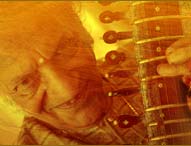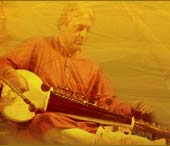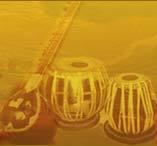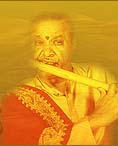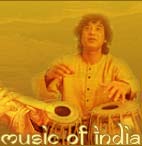Sarangi is a bowed stringed instrument and representative of India. The word 'Sarangi' has been derived from two Hindi words, 'Sau', which means hundred and 'Rang', which means color. It has thus been named Sarangi because the sound of this musical instrument is very pleasing and communicative. It also indicates a varied range of musical forms. Sarangi has the capability to produce different shades of emotions and flexible tunes. It is also admired to copy inflections of the human voice. Sarangi is used in North Indian classical music. Initially, it originated in Rajasthan and Punjab, where it was used as a folk instrument. It came into the world of Indian Classical Music during the eighteenth and nineteenth centuries. At that time, it was the most desired musical instrument of the artists. The music of Sarangi is often vocal. When the Sarangi player performs, the lyrics of classical songs are generally present in their mind and the performance follows the principle of vocal performance. Sarangi has made its own distinct place among the other musical instruments and is now often used as a solo instrument.
History of Sarangi
In the mid nineteenth century and initial part of twentieth century, many Khayal singers started using the Sarangi as the main musical instrument. Nowadays, many of the Sarangi players come from Delhi, Rajasthan, Uttar Pradesh and Madhya Pradesh. In present times, Sarangi is the most preferred accompanying musical instrument of Khayal and Thumri concerts. Sarangi is made from the wood of tun. It is about two feet long and half foot wide. It is made from a hollow single piece of wood. The body or the sound-box of this instrument is covered with the skin of goat, supporting the elephant-shaped bridge. The foremost playing strings are three in number and are parallel to low, middle and high octaves. These strings are made of animal gut and the forth sympathetic string is made of brass. Along with this, it has thirty five to forty metallic sympathetic strings. These strings are adjusted using sets of wooden tunets which are there on the side of the Sarangi. These sympathetic strings are divided into four different 'choirs'. The lowest level includes of a diatonic row of 9 tarabs and a chromatic row of 15 tarabs (resonance strings). There are two more sets of longer tarabs between these lower tarabs and the main playing strings. These strings are tuned to the essential tones of the raga. Talcum powder is used to provide lubrication in fingers. The other musical instruments which belong to the family of Sarangi are the Dotara, the Dhadsarangi of Punjab and the Chikara of Uttar Pradesh.
Occasions
Sarangi is traditionally linked with Kathak dance and the vocal styles of thumri, dadri and khayal. Earlier it was also related with an Indian form of the geisha tradition, known as tawaif.
Famous Sarangi Players
Ustad Bundu Khan, Pandit Ram Narayan, Ustad Ghulam Sabir Khan, Ustad Sagiruddin Khan and Pandit Gopal Mishra, Sultan Khan, Abdul Karim Khan, Shakur Khan, Niaz Ahmed, Fayaz Ahmed Khan, Rajan and Sajan Mishra are some of the famous Sarangi players. Ustad Abdul Latif Khan of Bhopal was one of the best sarangi players. The Patiala Gharana, owe their cultural heritage of playing the Sarangi.
